|
SERIES III,
1983
|
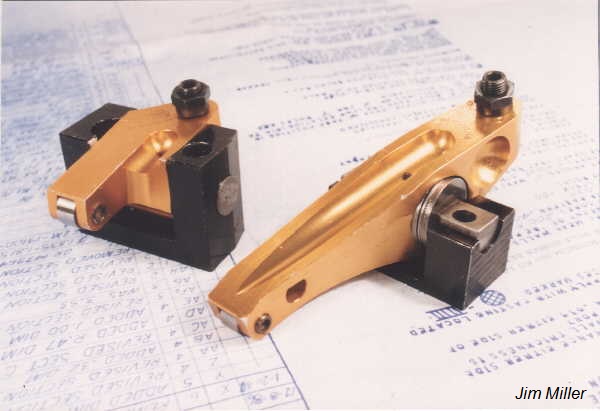 |
 |
 |
CLICK PHOTO For SERIES
II
Miller
trademark needle thrust bearings were first used on the BOSS 429 Series
III rockers, and continued to the PRO-SHAFT NASCAR designs 12 years later.
Industry first on both.
|
CLICK PHOTO For SERIES
IV
The Exhaust
Push-Rod leans away from the valve, while the Intake Push-Rod leans toward
the valve, forcing changes in height for geometry to require changing the
overall length of the rocker.
|
|
1983 marked the debut of the Series III
Miller MID-LIFT BOSS rockers, and perhaps the best. Although inherent BOSS
429 push-rod design geometry would remain the same, the Series III required
their own stands be designed to accommodate all new rocker bodies. The most
significant improvement was the straight line point-to-point Exhaust rocker,
which maintained the original Ford compound geometry necessary to controlling a
balanced division of side loads. Other manufacturers' designs
attempted to straighten this up by rotating the shaft and stand. The result was an excessive side
load in one direction only. Another first "drip down' oil holes placed at the
bottom of the ball mill lightening atop the rocker to feed the bearings; copied
later by other manufacturers. The Series III would often fit
beneath the OEM BOSS valve cover with only minimal work on the flange lip. Some
castings however, required a 1/2" spacer plate be added. |
|
 |
|
PUSH-ROD SIDE-THRUST IS
EVIDENT |
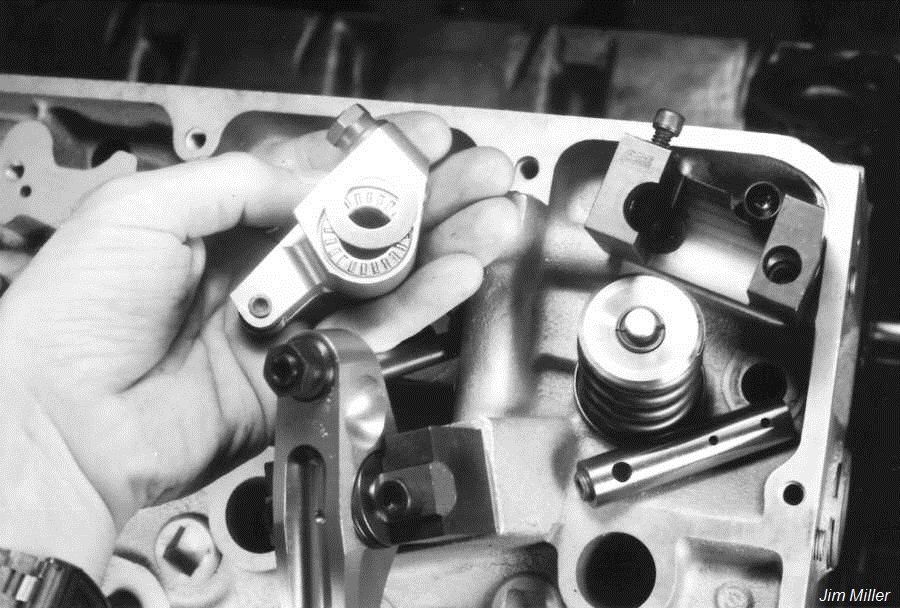 |
 |
|
INTAKE THRUST BEARINGS |
EXHAUST THRUST BEARINGS |
|
The GOSPEL of MID-LIFT geometry was
published in an article by Jim Miller that appeared in a Super Ford Magazine
in July, 1981, called:
To
Rock Or Not To Rock. That was 8 months after the Miller MID-LIFT
Patent was filed; 13 months before the Miller MID-LIFT Patent was issued. It
would be another 11
years before the Chevrolet Race Shop engineers endorsed it and duplicated the same information
in an October, 1992 issue of Car Craft Magazine, proclaiming these
principles as their official optimum rocker geometry. Seven years after that, on
March 9, 1999, Chrysler would mandate in a confidential engineering brochure
that ONLY MID-LIFT geometry be used for all seven of its NASCAR teams,
spearheaded by their point team leader, Ray Evernham. It would be 22 years after
this 1983 implementation on the BOSS 429, Series III rockers before the most
popular name brand rocker manufacturer would begin to use "thrust
bearings" on any rocker, where nearly every PRO series rocker Miller has
ever designed was patterned after the principles of side thrust control first
developed here, on this system. |
 |
The new
intake stand design utilized the OEM internal oiling from the head by
actually stealing it from the OEM stand's opposite side mounting bolt and
connecting a long vertical oil hole up to feed a free floating shaft. The
goal was to offer both OEM internal and push-rod oiling with
Miller's "drip down" design, without making any changes to the
heads themselves. The goal was met.
|
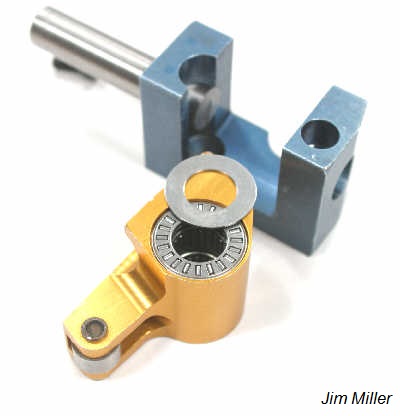 |
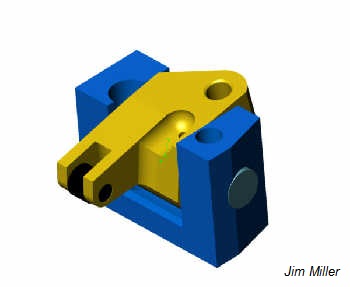 |
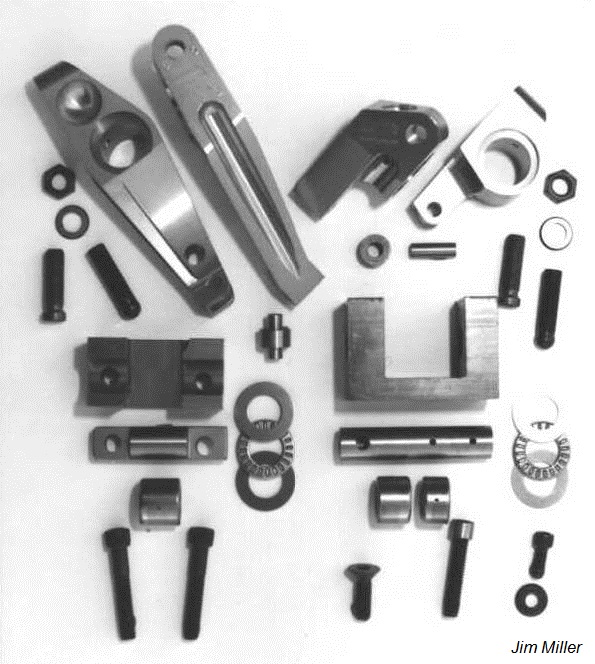 |
LEFT: Extra rocker bodies for two
perspectives are shown along with the remaining parts needed for one cylinder assembly.
Only 50
sets were made in 1983 and sold for $1,280 to $1,440. Today, they're like
GOLD, if you can find a set, and "if" you can convince the owner to sell
them. Won't happen. Wait for them to become part of the estate, then
fool the widow into selling them.
Some surface from time to
time, but most are still horded among BOSS owners, and not for sale.
Today's
2011 price to duplicate a set is factored at $5,600.
|

MILLER MID-LIFT™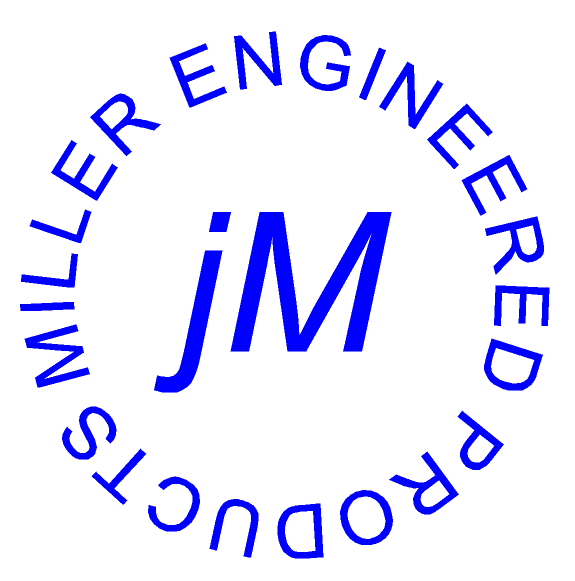
The Standard By Which All Is Measured!™
954-978-2171 MillerRockers@aol.com
MID-LIFT™, PRO-SHAFT™ & PRO-STUD™ are JM Miller Trademarks; Copyright © MMIII~MMXXIV
| |

